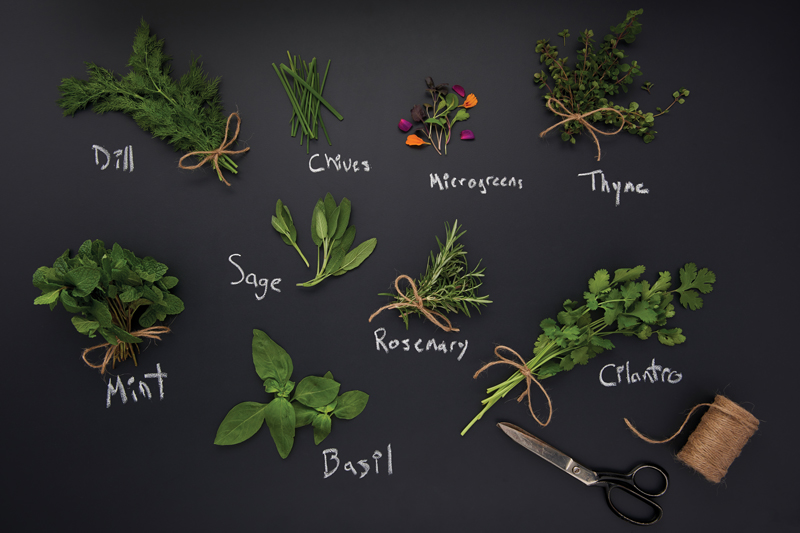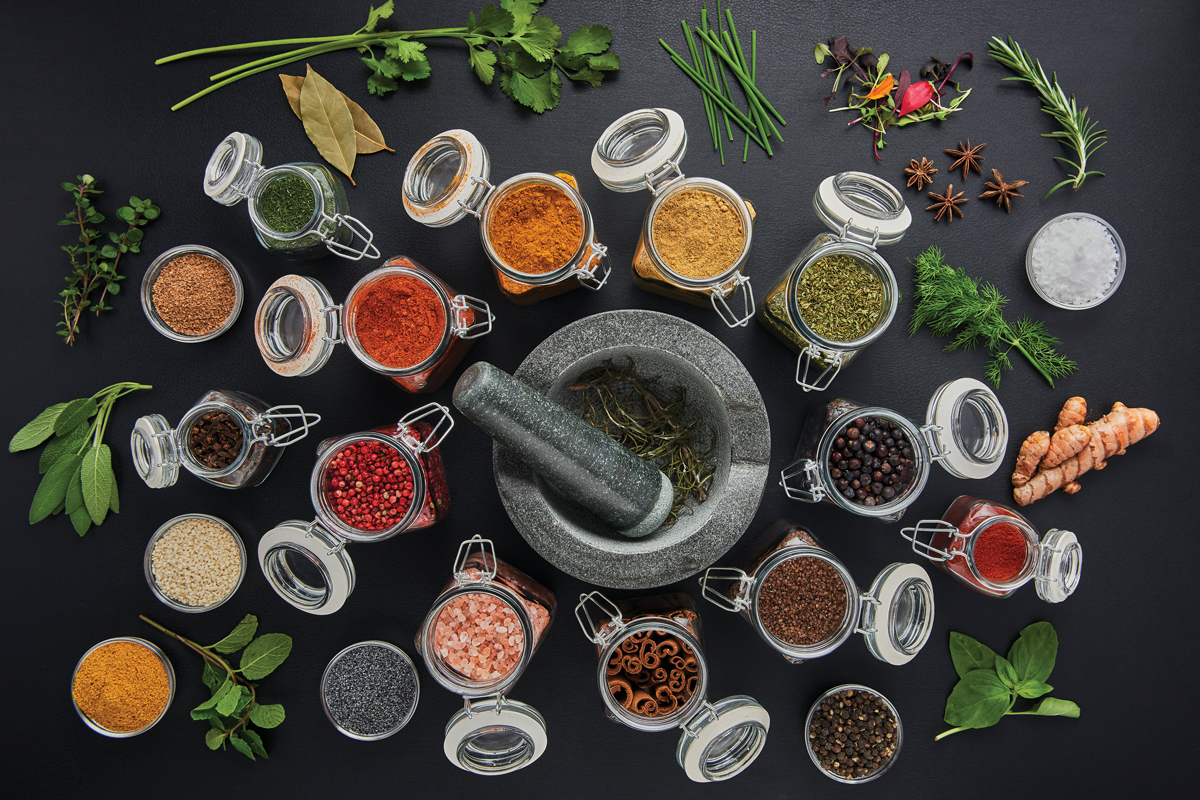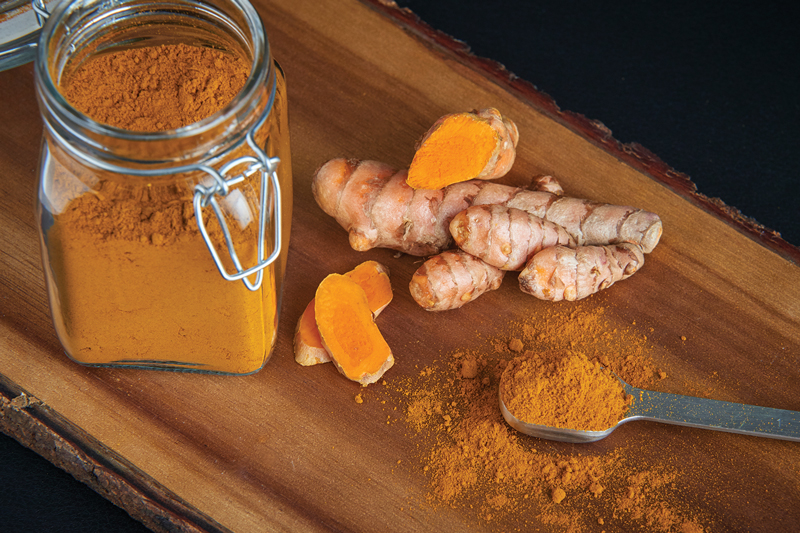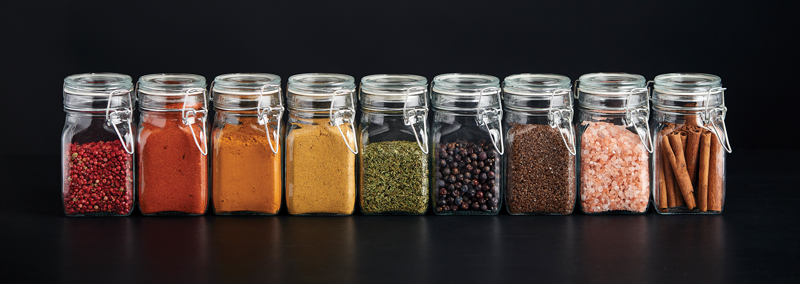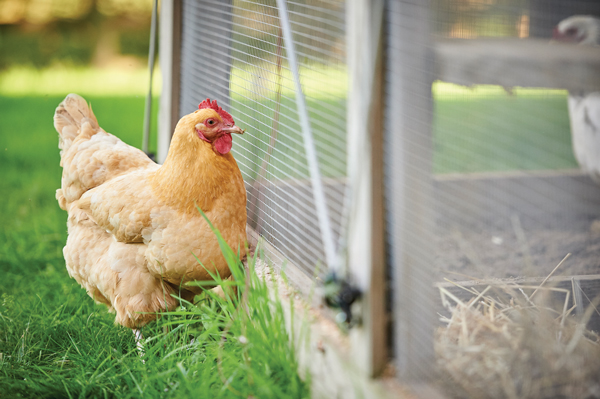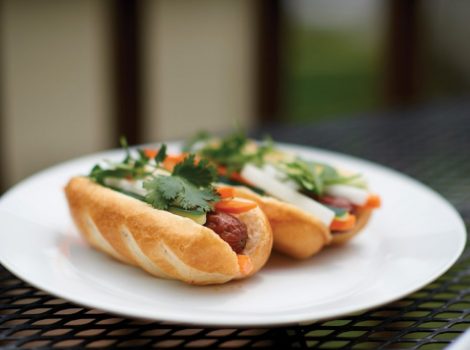Add Some Spice and Herbs to Your Meals
Originally featured in the May 2018 issue of Lancaster County magazine.
Finding Pennsylvania Dutch recipes with seasonings beyond butter, salt and sugar – and maybe saffron and parsley – can be a challenge. While such ingredients make up a warm part of our culinary heritage, there’s considerably more we can bring to the table … like herbs and spices.
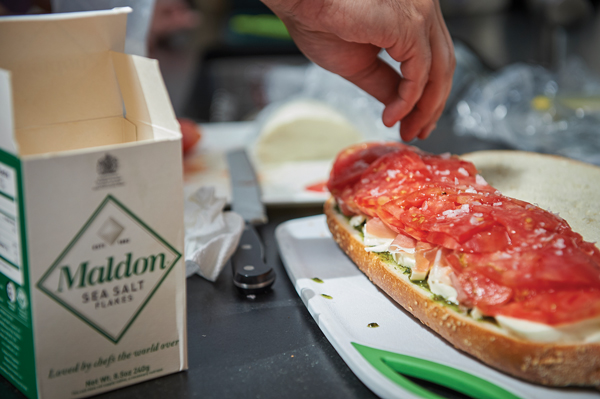 Sometime around the age of 15, I remember discovering the metal tin of ground pepper in the back of the pantry. Like me, it dated to 1985. Well into adulthood, I carried the perception that spices lasted forever and that having fresh herbs on hand was too much work and often a waste of energy.
Sometime around the age of 15, I remember discovering the metal tin of ground pepper in the back of the pantry. Like me, it dated to 1985. Well into adulthood, I carried the perception that spices lasted forever and that having fresh herbs on hand was too much work and often a waste of energy.
I’m glad to say that those days are in the past both from a personal and a local perspective. Today, downtown Lancaster, along with many other areas of the county, is home to a growing food culture that’s gaining notoriety for its quality and brilliant diversity. I keep having conversations with food folks who grew up in the area and then moved away, only to return with an elevated appreciation for our community. They also return with a host of new ideas in tow. And, transplants from all over the globe are bringing their culinary traditions with them and introducing us to a world of flavor. Where those ideas and traditions intersect with local culture is a true sweet spot.
I suppose you could say I fit into both of those categories. Photography has taken me to Africa, India and southern Louisiana, where I learned how little I know about life, especially food. Along the way, I’ve discovered new cooking ingredients. I adore watching dinner guests discover those flavor combinations with me. When something new becomes a staple in my or a friend’s kitchen, the feeling is wholly gratifying.
In many ways, the key to an exquisite meal is to start with fresh, quality ingredients (and being sure not to ruin them). A collection of ingredients combines to create something greater than the sum of its parts. Especially in preparing last-minute meals, using herbs and spices can be easily overlooked in both freshness and inclusion. Where baking often needs to be a science with precise quantities of ingredients, cooking should be an art. How you cook on any given occasion runs through the filter of your soul, your mood and the flavors of the ingredients you have to work with.
Getting Started
 Possessing a fundamental understanding of how specific herbs and spices develop a dish will help you cook free of a recipe and cater to your unique palate. You have to know what flavors you like, and the process of expanding that list is heaps of fun. For example, sweet and spicy play well together as is evidenced in Mexican hot chocolate, which can include cinnamon, sugar and nutmeg balanced with tantalizing chili powder. Star anise, cloves, rosemary and allspice paired with maple syrup or honey can set off creamy foods (think cocktails or even ice cream).
Possessing a fundamental understanding of how specific herbs and spices develop a dish will help you cook free of a recipe and cater to your unique palate. You have to know what flavors you like, and the process of expanding that list is heaps of fun. For example, sweet and spicy play well together as is evidenced in Mexican hot chocolate, which can include cinnamon, sugar and nutmeg balanced with tantalizing chili powder. Star anise, cloves, rosemary and allspice paired with maple syrup or honey can set off creamy foods (think cocktails or even ice cream).
The selection of ingredients lining your pantry shelves is usually determined by the cultural varieties of food you enjoy cooking. While space is often limited, the list of options to consider is endless.
Prep
A mortar and pestle will enhance the spices and dried herbs already in your pantry. Useful for crushing and finely grinding wet or dry ingredients, mortar and pestles have greater relevance in our lives than on signage at the local pharmacy. There are several types available; I recommend starting with a set made of granite or marble for versatility. Similar to how you slice an onion, how you mince, crush, slice or even roast whole garlic cloves will bring out different notes from the same food source.
Salt and Pepper
While salt and pepper are as basic as it gets, many variants of even those simple choices are widely available. While freshly ground pepper brings a bold complexity to a dish – adding dimension and flavor – I love crunching into bits of Tellicherry peppercorns in buttermilk deep-fried chicken for an explosion of mild heat.
Conversely, salt enhances flavors that already exist, except where outside flavors have been added, such as with applewood-smoked or lavender salt. Large, flaky salts such as Maldon, kosher and (pink) Himalayan sea salt have coarser granules that make them an excellent choice for finishing a dish or adding crunch and a burst of flavor. Finer table salt spreads evenly for more consistency. In cooking, the finer the grain, typically the less you’ll need because it packs more densely, so choose wisely when you pull one from the cupboard.
Some Must-Haves
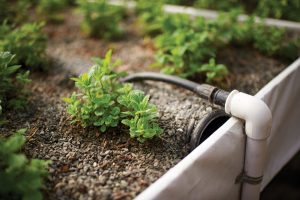 Growing your own herbs adds freshness with a connected sense of pride to your cooking. Incorporating fresh herbs is a way to take a conventional dish up a level. Try adding rosemary, garlic, olive oil, salt and pepper to potatoes (roasted until crispy), and an otherwise traditional side dish will be transformed into something special.
Growing your own herbs adds freshness with a connected sense of pride to your cooking. Incorporating fresh herbs is a way to take a conventional dish up a level. Try adding rosemary, garlic, olive oil, salt and pepper to potatoes (roasted until crispy), and an otherwise traditional side dish will be transformed into something special.
Basil is an annual herb, one year and done, requiring frequent watering and pruning flower buds before they blossom to keep it healthy. That said, having fresh basil on hand for something as simple as takeout pizza will truly make a person a believer in the power of herbs. Oregano, a staple in Mediterranean dishes, is a hardy perennial and will return even after a hard winter. Lemongrass is another annual I enjoy growing for brewing tea, plus it’s commonly used in Asian cuisine.
Container gardening is a perfect way to get started growing herbs. The containers will do just that (mint tends to go wild and take over when planted in the ground), plus you can locate them close to your kitchen door or grill for convenient cutting. And, containers filled with herbs provide a wonderful aroma on decks or patios.
Drying Herbs
Bundles of fresh herbs often include quantities larger than a recipe calls for. Instead of discarding them, try drying fresh herbs as a way to preserve that flavor for a future meal. Depending on the variety, drying herbs can be as simple as hanging a small bundle upside-down covered with a towel or breathable paper bag. Herbs with a higher moisture content will dry better in the oven over the course of a couple of hours, or in a food dehydrator, if you have one. Herbs can often be frozen whole or used in sauces, also to be canned or frozen. Zesty pesto, lemon-herb, cilantro and jalapeño sauces are divine uses for your leftover harvest.
If substituting dry herbs in a recipe that calls for fresh, a 1/3 reduction in volume or weight is a safe standard as the flavor is concentrated. At the same time, that equation is not so cut and dry. No two ingredients are exactly the same, varying by source, season or variety, so it’s often necessary to make adjustments to taste.
Older spices and dried herbs lose flavor over time, so use what you’ve got while it’s fresh. When stored in a dark, cool, dry cabinet, ground spices should last for six to eight months, possibly longer, before losing flavor. Whole grains such as cloves and nuts, can last indefinitely.
Personally, and perhaps it’s part heritage, I try to hold onto the things I value for as long as possible. The abundance of fresh, nutritious and delicious foods that surrounds us every day is best appreciated often and without delay. It is easy to want to cherish something wonderful. In this case, that involves cooking with those aromatic herbs and spices, so don’t skimp. If you want to make it even better, share that heartwarming and flavorful meal with someone in your life. Introduce them to something new. Of everything that transpires when preparing a home-cooked meal, that’s worth holding onto the most.
Local Provisions
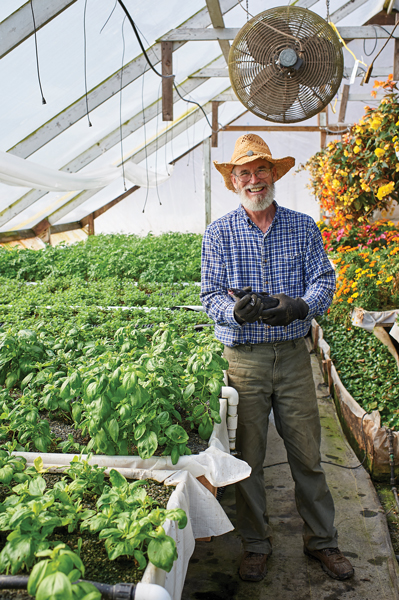 If you’re not yet keen to grow some of your own herbs, Lancaster Central Market is home to a stand that does. Brogue Hydroponics, which is based in southern York County, is a popular source for hydroponic- and aquaponic-grown herbs. Their greenhouses use complex systems for watering and providing specific levels of nutrients to plants for consistent high quality and delicious flavor. Chefs throughout the region use their products in their kitchens. For more information, visit broguehydroponics.com.
If you’re not yet keen to grow some of your own herbs, Lancaster Central Market is home to a stand that does. Brogue Hydroponics, which is based in southern York County, is a popular source for hydroponic- and aquaponic-grown herbs. Their greenhouses use complex systems for watering and providing specific levels of nutrients to plants for consistent high quality and delicious flavor. Chefs throughout the region use their products in their kitchens. For more information, visit broguehydroponics.com.
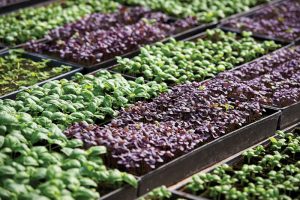 The Herb Shop, also at Central Market, is another favorite local source of mine, where my nose and eyes compete in a competition of sensory overload. Started in Lititz in 1980 by Barbara Zink and continued at market by her husband, Jim, the business is now operated by their granddaughter, Corrie Breen. The Herb Shop offers a unique service – order online and you have the option of picking up your purchase at market. For details, visit theherbshoplancaster.com.
The Herb Shop, also at Central Market, is another favorite local source of mine, where my nose and eyes compete in a competition of sensory overload. Started in Lititz in 1980 by Barbara Zink and continued at market by her husband, Jim, the business is now operated by their granddaughter, Corrie Breen. The Herb Shop offers a unique service – order online and you have the option of picking up your purchase at market. For details, visit theherbshoplancaster.com.
If you are looking to grow your own herbs, local farm stands and garden centers sell herbs for planting in the spring.
Landis Valley Herb and Garden Faire
Another source is Landis Valley’s Herb and Garden Faire, which is being held May 11 and 12. The event features more than 80 vendors offering an assortment of greens as well as heirloom plants, garden products and more. To learn more, visit landisvalleymuseum.org.

